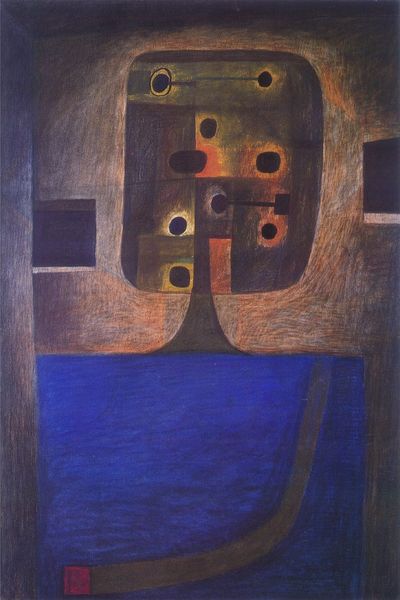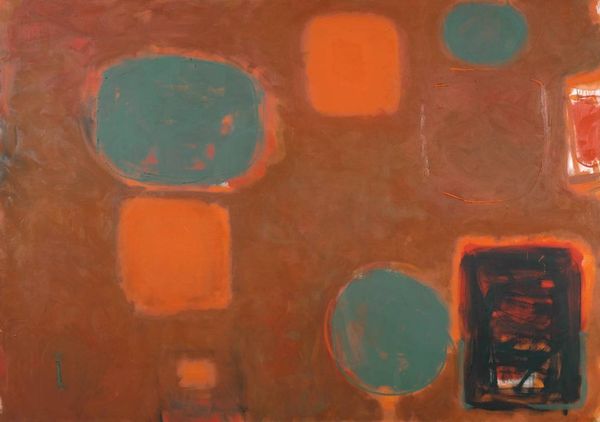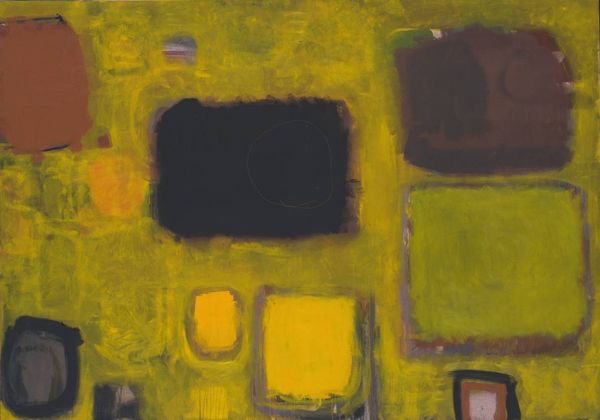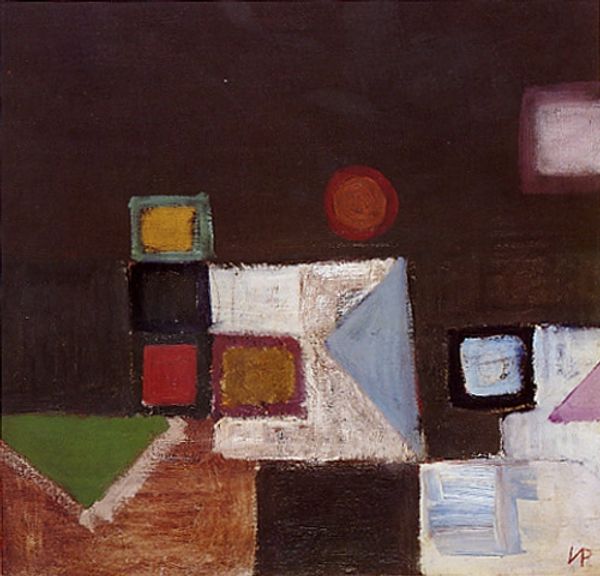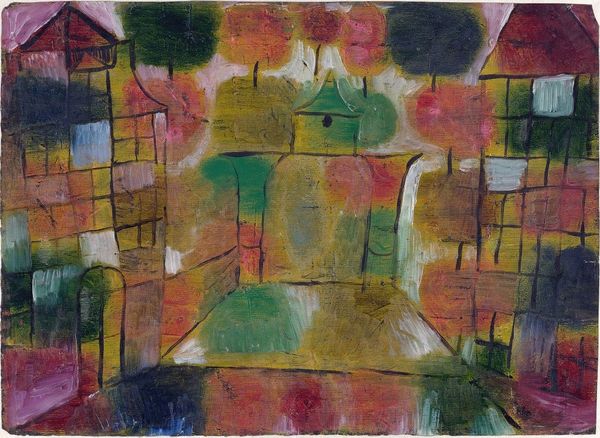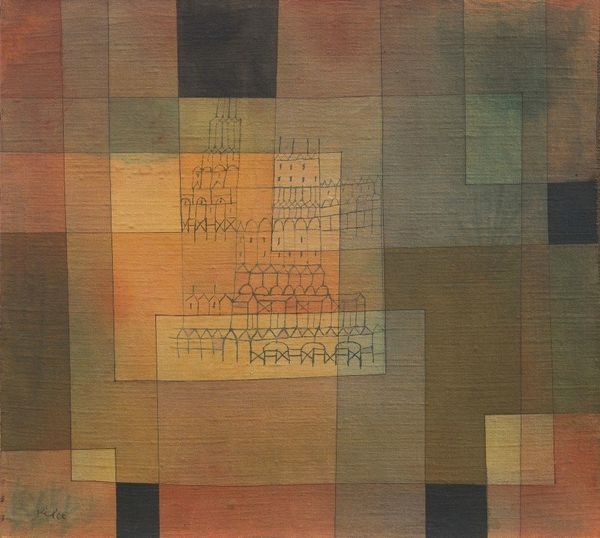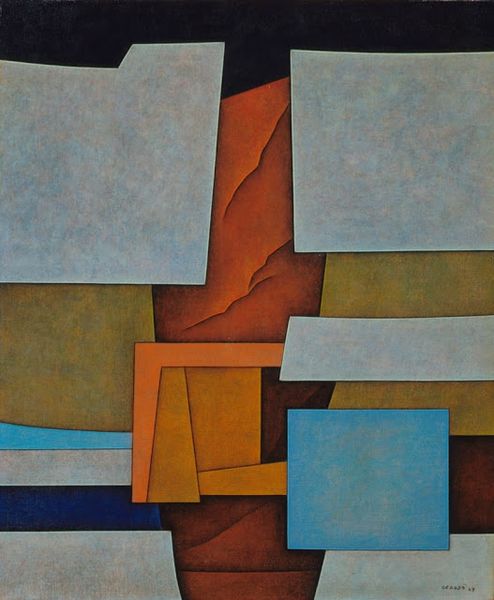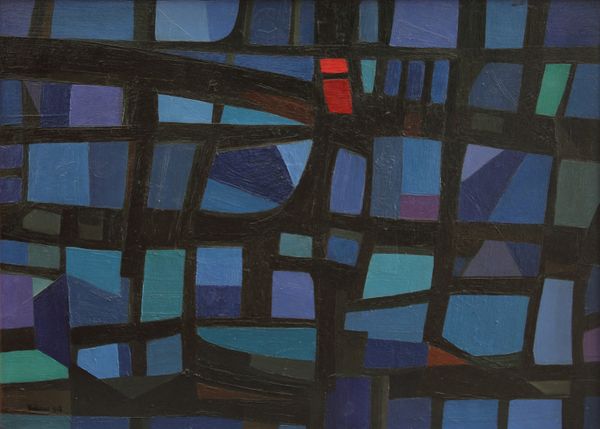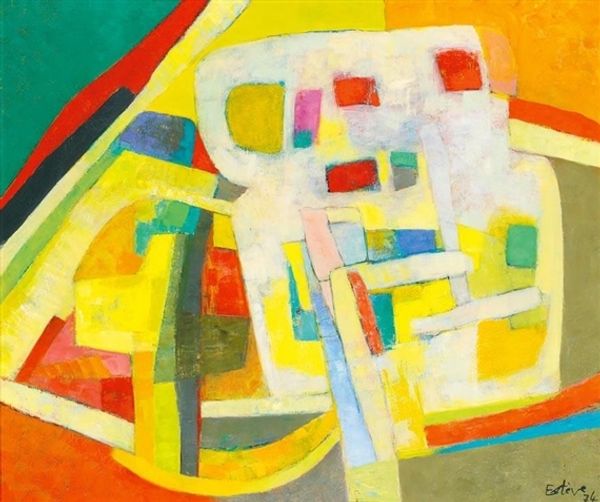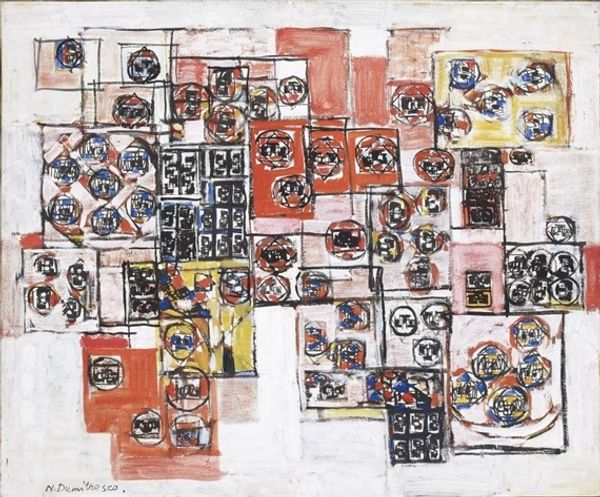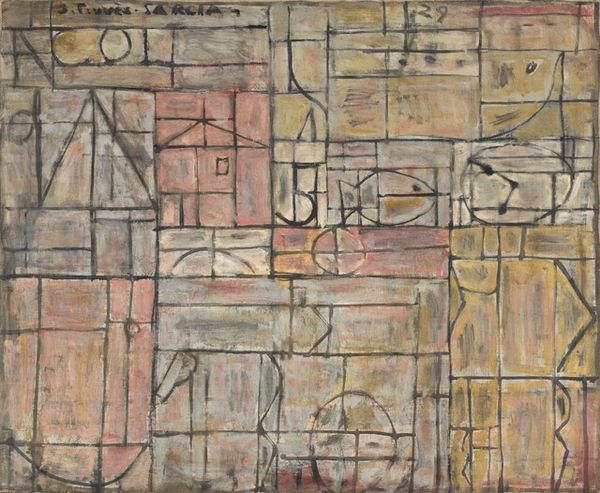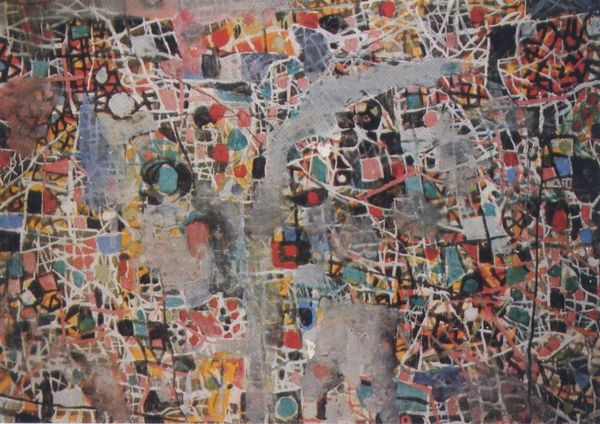
painting, oil-paint
#
abstract-expressionism
#
abstract painting
#
painting
#
oil-paint
#
painted
#
form
#
oil painting
#
acrylic on canvas
#
geometric-abstraction
#
line
Copyright: Gunther Gerzso,Fair Use
Editor: This is an untitled oil painting by Gunther Gerzso, created in 1953. I'm struck by how these geometric forms create a kind of mysterious map or cityscape. How do you interpret this work? Curator: It's tempting to read it as a cityscape, and Gerzso, while resisting easy categorization, definitely engaged with the anxieties and ambiguities of his time through abstraction. What resonates with me is how his geometric forms challenge the dominance of Western representational art by invoking Indigenous visual languages. Do you see how the patterns and the earth tones might echo pre-Columbian codices and murals? Editor: I hadn't considered that! I was so focused on the abstract quality. So, you're suggesting a dialogue, or maybe even a subtle act of resistance, against European artistic traditions? Curator: Precisely. Think about the social and political climate of the 1950s in Latin America. Many artists were grappling with questions of identity and cultural imperialism. Gerzso’s abstraction can be viewed as a search for an authentic visual language, one rooted in his Mexican heritage while participating in the global abstract expressionist movement. How does that shift your initial interpretation? Editor: It completely changes it! I initially saw it as purely formal, but now I recognize a complex negotiation of cultural influences. I now see it as not just an abstraction, but also a statement on cultural identity and resistance. Curator: Exactly. And by refusing to title the work, Gerzso perhaps intentionally leaves it open for diverse interpretations, inviting viewers to participate in the ongoing dialogue between art and identity. Editor: This has been truly eye-opening. I now see so much more depth. Thanks!
Comments
No comments
Be the first to comment and join the conversation on the ultimate creative platform.

